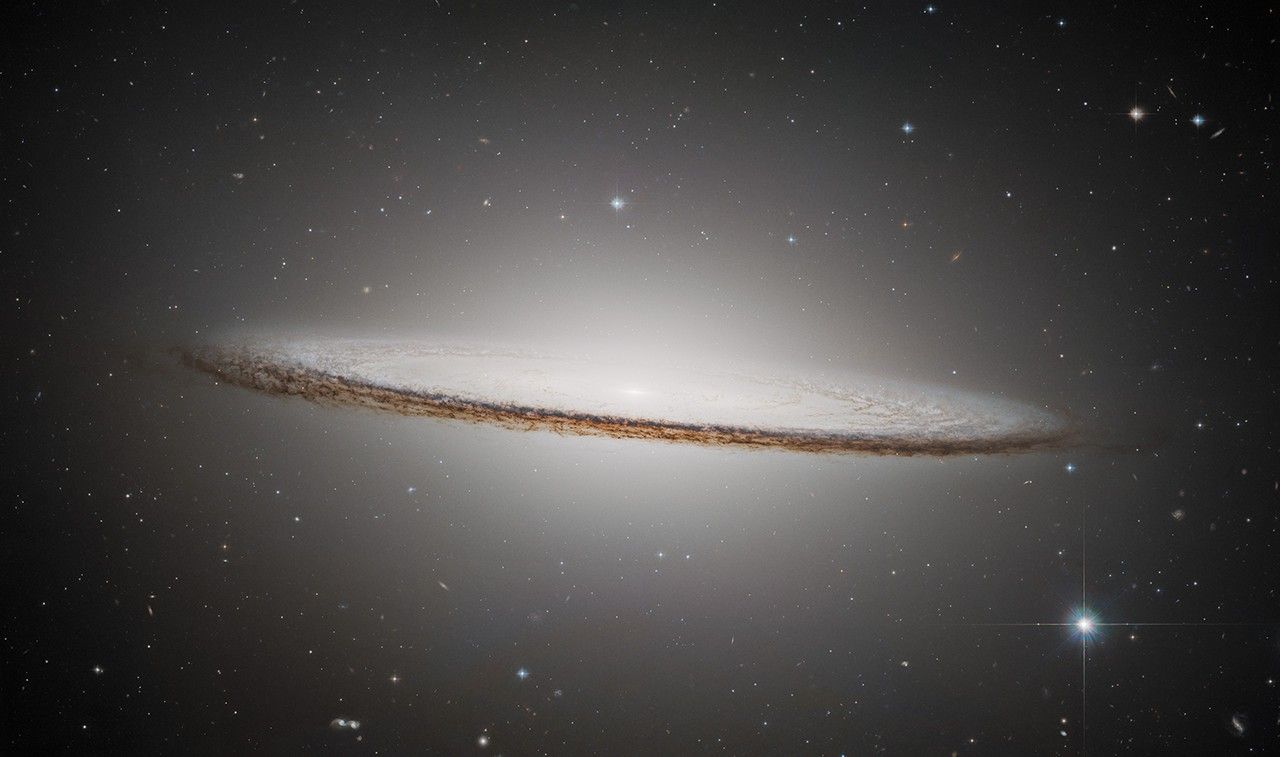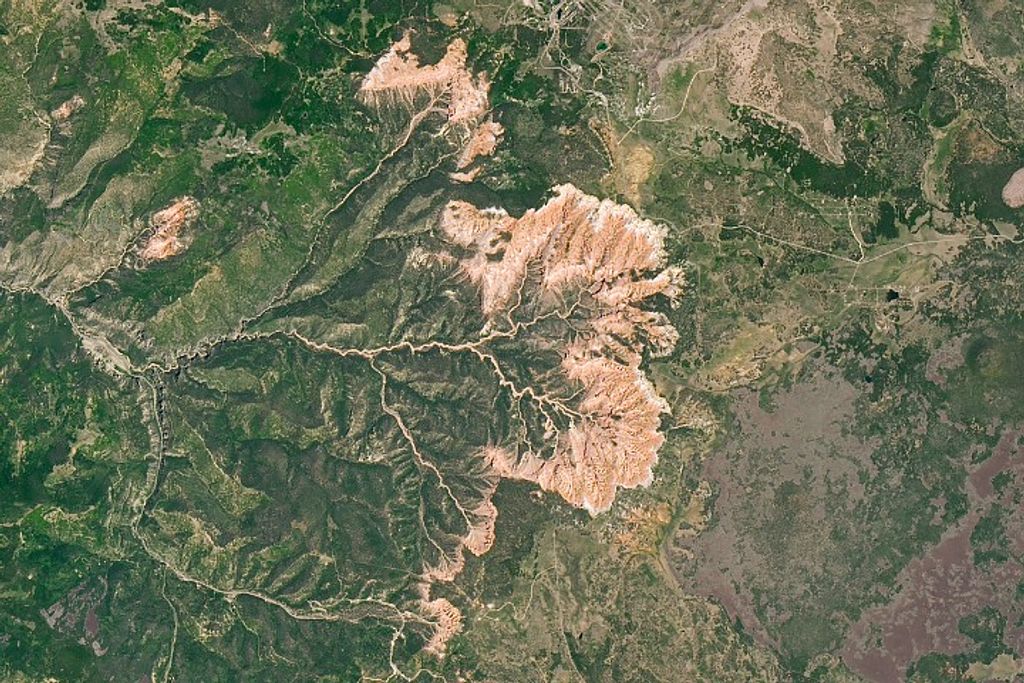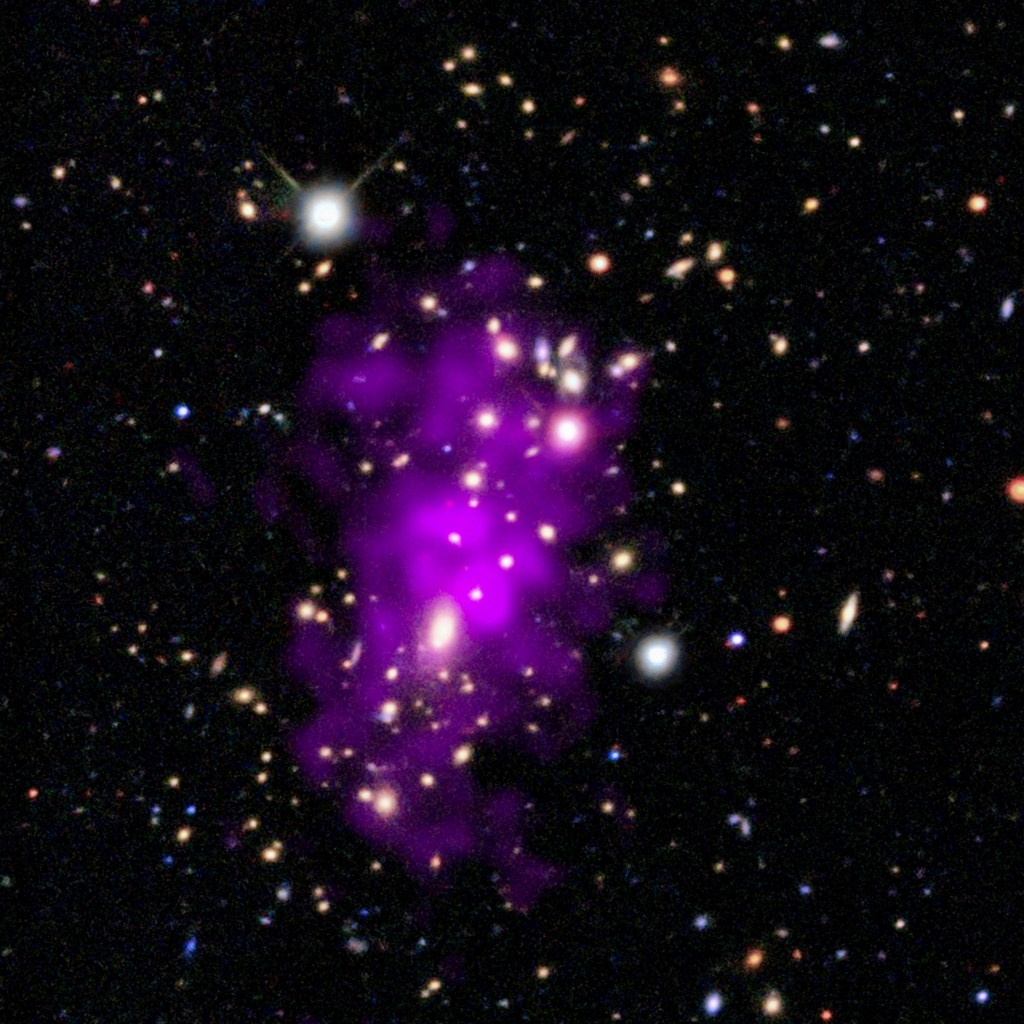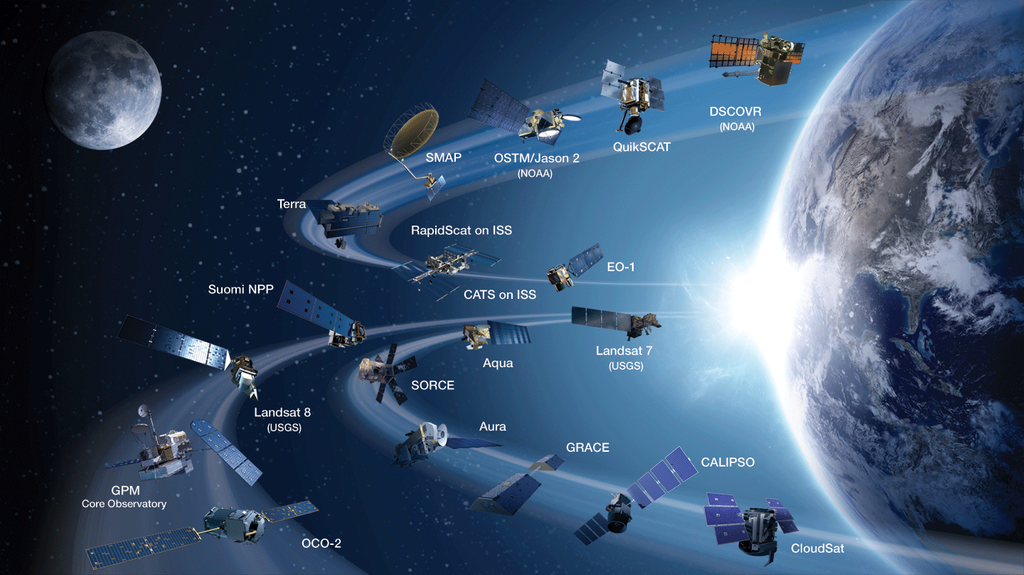Sombrero Galaxy

Located around 30 million light-years away in the constellation Virgo, the Sombrero Galaxy is instantly recognizable. Viewed nearly edge on, the galaxy’s softly luminous bulge and sharply outlined disk resemble the rounded crown and broad brim of the Mexican hat from which the galaxy gets its name.
Though packed with stars, the Sombrero Galaxy is surprisingly not a hotbed of star formation. Less than one solar mass of gas is converted into stars within the knotted, dusty disk of the galaxy each year. Even the galaxy’s central supermassive black hole, which at nine billion solar masses is more than 2,000 times more massive than the Milky Way’s central black hole, is fairly calm.
The galaxy is too faint to spot with the unaided eye, but it is readily viewable with a modest amateur telescope. Seen from Earth, the galaxy spans a distance equivalent to roughly one-third the diameter of the full Moon. The galaxy’s size on the sky is too large to fit within Hubble’s narrow field of view, so this image is actually a mosaic of several images stitched together.
About the Object
- R.A. PositionR.A. PositionRight ascension – analogous to longitude – is one component of an object's position.12 39 59.32
- Dec. PositionDec. PositionDeclination – analogous to latitude – is one component of an object's position.-11° 37' 16.78"
- ConstellationConstellationOne of 88 recognized regions of the celestial sphere in which the object appears.Virgo
- DistanceDistanceThe physical distance from Earth to the astronomical object. Distances within our solar system are usually measured in Astronomical Units (AU). Distances between stars are usually measured in light-years. Interstellar distances can also be measured in parsecs.30 million light-years
About the Data
- Data DescriptionData DescriptionProposal: A description of the observations, their scientific justification, and the links to the data available in the science archive.
Science Team: The astronomers who planned the observations and analyzed the data. "PI" refers to the Principal Investigator.This image was developed using data from the Hubble observing program #9714 (PI: K. Noll)
- Object NameObject NameA name or catalog number that astronomers use to identify an astronomical object.Sombrero Galaxy, Messier 104
- Release DateApril 16, 2025
- Science ReleaseHubble Provides New View of Galactic Favorite
- CreditESA/Hubble & NASA, K. Noll
Share
Details
Claire Andreoli
NASA’s Goddard Space Flight Center
Greenbelt, Maryland
claire.andreoli@nasa.gov
Bethany Downer
ESA/Hubble
bethany.downer@esahubble.org
Garching, Germany






























